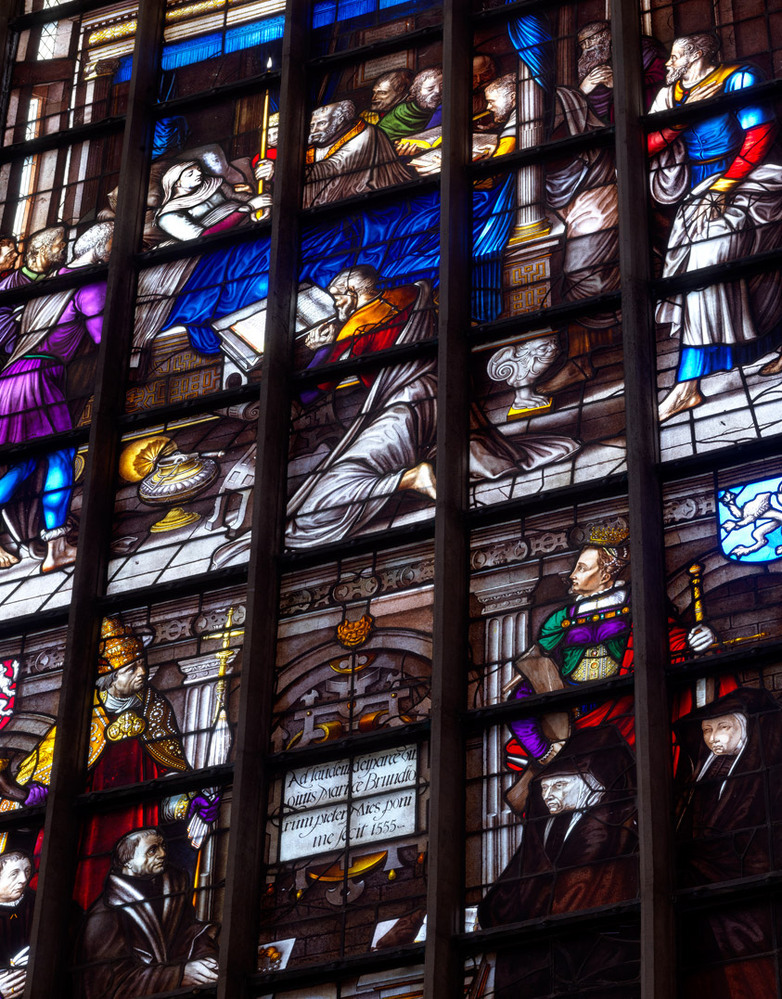
In the late Middle Ages, Maria’s deathbed was usually shown in a contemporary, homely environment. The twelve apostles are united around her bed. Peter is giving his blessing as the others are reading and praying in preparation for her burial. Near the bottom of the window, the donors –the Brunt family –and their patron saints are depicted. The stained-glass window was made by glazier Dirck Crabeth from Gouda and dates back to 1555.
Stained glass is a form of glass art. In the Middle Ages, the windows of churches were completely or partially stained glass which was held together in lead strips. As a result, light entered the church space in all kinds of sparkling colours. The Oude Kerk had a total of 33 stained-glass windows, most of them from the 15th and 16th centuries, four from the 17th century and one from the 18th century. The windows in the Lady Chapel are the oldest, albeit in altered and greatly restored form.

